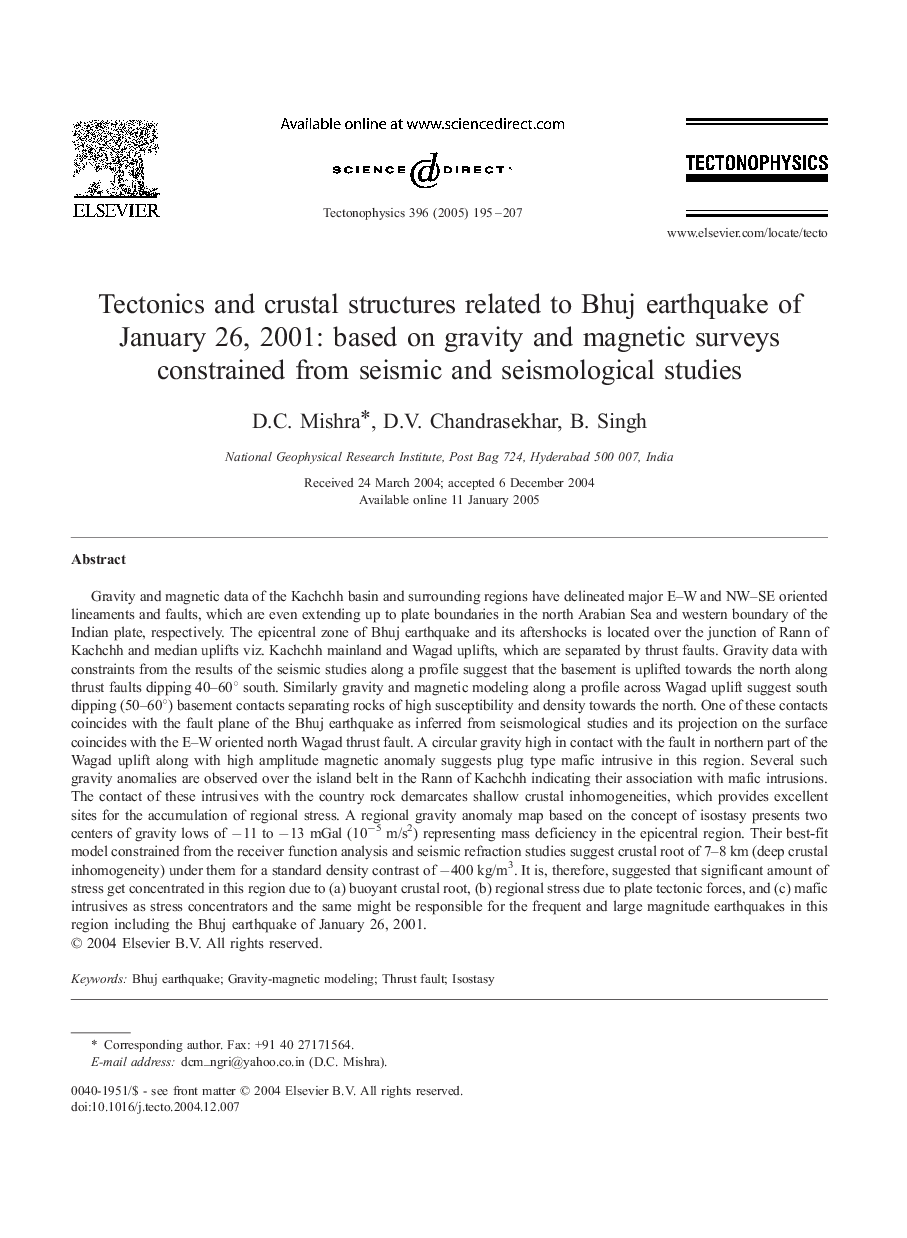| Article ID | Journal | Published Year | Pages | File Type |
|---|---|---|---|---|
| 9527116 | Tectonophysics | 2005 | 13 Pages |
Abstract
Gravity and magnetic data of the Kachchh basin and surrounding regions have delineated major E-W and NW-SE oriented lineaments and faults, which are even extending up to plate boundaries in the north Arabian Sea and western boundary of the Indian plate, respectively. The epicentral zone of Bhuj earthquake and its aftershocks is located over the junction of Rann of Kachchh and median uplifts viz. Kachchh mainland and Wagad uplifts, which are separated by thrust faults. Gravity data with constraints from the results of the seismic studies along a profile suggest that the basement is uplifted towards the north along thrust faults dipping 40-60° south. Similarly gravity and magnetic modeling along a profile across Wagad uplift suggest south dipping (50-60°) basement contacts separating rocks of high susceptibility and density towards the north. One of these contacts coincides with the fault plane of the Bhuj earthquake as inferred from seismological studies and its projection on the surface coincides with the E-W oriented north Wagad thrust fault. A circular gravity high in contact with the fault in northern part of the Wagad uplift along with high amplitude magnetic anomaly suggests plug type mafic intrusive in this region. Several such gravity anomalies are observed over the island belt in the Rann of Kachchh indicating their association with mafic intrusions. The contact of these intrusives with the country rock demarcates shallow crustal inhomogeneities, which provides excellent sites for the accumulation of regional stress. A regional gravity anomaly map based on the concept of isostasy presents two centers of gravity lows of â11 to â13 mGal (10â5 m/s2) representing mass deficiency in the epicentral region. Their best-fit model constrained from the receiver function analysis and seismic refraction studies suggest crustal root of 7-8 km (deep crustal inhomogeneity) under them for a standard density contrast of â400 kg/m3. It is, therefore, suggested that significant amount of stress get concentrated in this region due to (a) buoyant crustal root, (b) regional stress due to plate tectonic forces, and (c) mafic intrusives as stress concentrators and the same might be responsible for the frequent and large magnitude earthquakes in this region including the Bhuj earthquake of January 26, 2001.
Keywords
Related Topics
Physical Sciences and Engineering
Earth and Planetary Sciences
Earth-Surface Processes
Authors
D.C. Mishra, D.V. Chandrasekhar, B. Singh,
